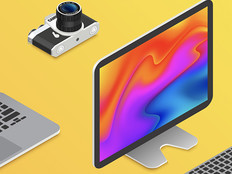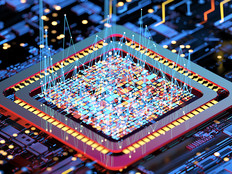IBM System x3655

When the Big Blue box arrived, it felt like Christmas morning. I took my time inspecting each piece of the package’s contents and thought, “These are not rapid rails. Will they fit in my server rack?”
The IBM System x3655 features up to two AMD dual-core processors and 64 gigabytes of double-data-rate synchronous dynamic memory via 16 dual in-line memory module slots. The available resources can easily handle intensive applications, such as the Structured Query Language database and the large document management application with its own proprietary database that we run at my company.
End-User Advantages
How many times have you heard, “The system is slow”? It’s one of those vague and common Monday morning complaints. When end users are unhappy, they quickly lose faith in the IT department. And one of the pitfalls for IT is not having enough system resources for applications. In some cases, we’ve loaded multiple applications on one server. With its beefy resources and reliability, the x3655 can help keep many apps humming.
To test the x3655, our tech team loaded the resource-intensive document management app. Integrated with our accounts payable program, this app is moving us one step closer to a paperless utopia. The upload went off without a hitch.
I then loaded the workstation application on five PCs, although almost all of the processing is on the server side. Then, as users were setting up workflows, we submitted several hefty files for processing. Within a few minutes, the documents were available, and throughout, there was no noticeable drop in performance.
As one user said, it was “like we were protozoa before.” To top it all off, we did all of this with the preloaded hardware: one AMD dual-core processor, 1GB of RAM and two 10K hard drives.
Why It Works for IT
For setup, I skimmed the manual, and then proceeded by hooking up the keyboard, mouse and monitor and grabbing the install disk. To my surprise, there was a picture of a penguin on the CD. Yes, a Linux disk. Congratulations to the IBM engineers for creating a Linux setup boot disk that also creates an answer file. Not only did it create the redundant arrays of independent disks (RAID) and install the operating system, but it also added the new x3655 to my domain.
I then left the x3655 running on my desk overnight to validate IBM’s claim that the server can keep its cool and won’t hog power. The next morning, I placed my palm on the back of the server, fully expecting to feel heat pouring out; to my delight, the x3655 was still cool to the touch.
With the hot-swappable hard drives, if one drive goes out, we can quickly minimize downtime, while the RAID is rebuilt for the replaced drive. The server has an optional second power supply and dual network interface cards for failover, and you can also team the NICs to reduce downtime.
You have a choice of AMD dual-core Opteron processors — either the 2.8-gigahertz Model 2220 or low-power 1.86GHz 2210 HE processor — to power the 2U rack-optimized system server. (Yes, it did fit in my rack from a competing vendor.)
Do the dual-core processors provide superior performance over single-core processors? The answer is a resounding, stand-up-and-clap-your-hands yes. How about over multithreading processors? Again, yes. The AMD dual-core processors make quite a difference. In my shop, I no longer have to monitor for spikes in processor use, and the robust I/O rates easily surpass our needs.
In the test environment, the AMD processors moved documents quickly. We regularly upload 5- to 10-megabyte patient files, which previously took a few hours. With the AMD dual processors, we loaded them in 15 minutes. This system changed the way we worked.
The x3655 would make a great server for Microsoft Exchange or SQL Server. Although I found that it could handle the database needs of multiple users with ease, you may want to bump up the RAM if you have a lot of users.
(FYI: The system integrated nicely with our keyboard, video, mouse switches, requiring no extra cables, keyboards or monitors.)
Disadvantages
One potential problem is that the server ships with only two hard drives. If you need redundancy, you have to give up a full drive. That’s insufficient. At 1GB, it also lacks RAM. Few servers run well with only that much RAM. Most of our mission-critical servers average 4GB, and some have as much as 8GB. For example, we have two servers hosting electronic health records with a Citrix Systems thin-client front end, and these have 2GB of RAM each.
To better handle support needs, I would:
- Consider upgrading to 2GB of RAM for up to 50 users and 4GB of RAM for up to 100 users. Although it’s best to run RAM in pairs, with only 2GB of RAM, four of 16 DIMM slots would be full.
- Add a third hard drive and reconfigure for RAID 5 if I was going to use this server in a production environment.
- Possibly add the second dual-core processor. Even though most applications do not yet take full advantage of multithreading, I would like to see how the additional processor increases performance.
Despite the recommended upgrades, I am impressed with the IBM x3655’s out-of-the-box performance. This machine seems to be a workhorse, and its scalability is a definite plus.
CDW Price: $2,803.99






